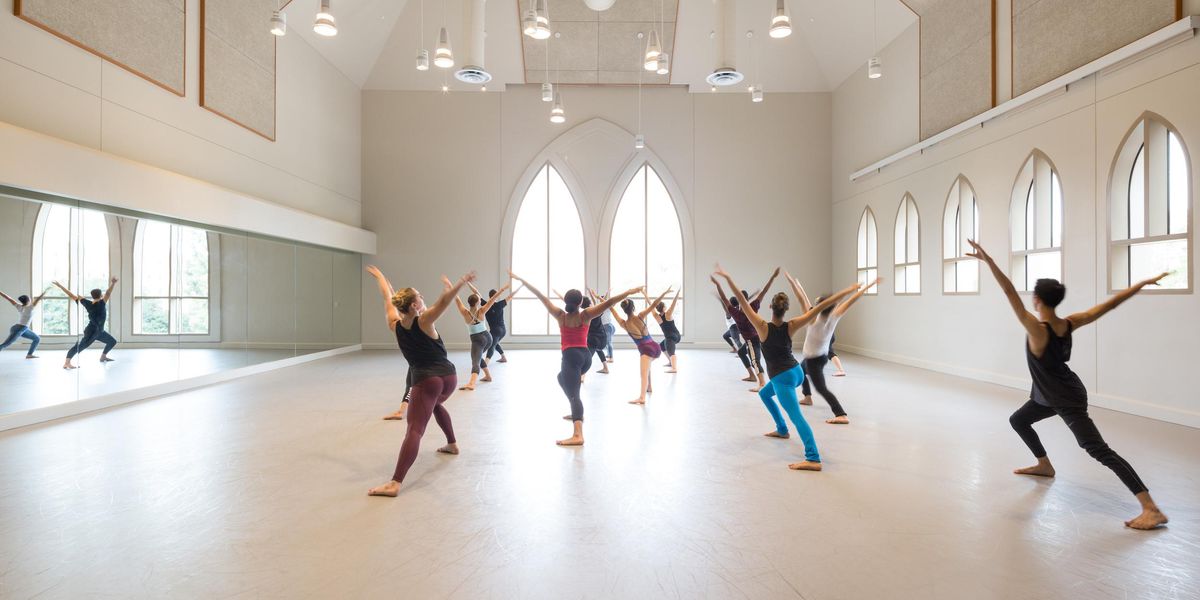Go West, Young Dancer
Rafailedes joined LADP for its rep: Here, Justin Peck’s Murder Ballades with Nathan Makolandra. Photo by Laurent Philippe, Courtesy LADP.
In February 2013, Rachelle Rafailedes sat in an airport with tears in her eyes and a knot in her stomach. After eight fruitful years in New York City—four as a student at The Juilliard School and four dancing for Kyle Abraham—she was relocating to California to join L.A. Dance Project, the company founded in 2012 by Benjamin Millepied, now artistic director of the Paris Opéra Ballet.
“I thought, What am I doing?” Rafailedes recalls. “It was a moment of, Okay, I hope I made the right decision because I just changed everything in my life in one moment.” To add to the stress, when Millepied offered her the job, he had also just announced his new position in Paris. (He assured her that he was committed to LADP’s longevity by convening a top-notch artistic and administrative team.) Yet today, she reports that the leap of faith has paid off. “It’s been so rewarding and so worth it,” she says. “I’ve grown so much.”
In the past few decades, Los Angeles has perhaps unfairly earned a reputation as something of a concert dance wasteland. But that label is quickly changing, thanks in part to the establishment of LADP and other independent contemporary companies, like BODYTRAFFIC, L.A. Contemporary Dance Company and Ate9, led by former Batsheva dancer Danielle Agami, who occasionally teaches Gaga for LADP. “There is an audience here and it is younger, which is exciting,” Rafailedes says. “People are hungry for it.”
That hunger is satiated by LADP’s bold and sophisticated programming, which includes works by Millepied, Justin Peck, Merce Cunningham and William Forsythe—the rep is what drew Rafailedes to the company—and collaborations with noted visual artists and composers. “What’s cool about this company, and the most challenging part, is that you have to be in three different worlds in one evening,” she says.
Still, Rafailedes’ transition to the West Coast wasn’t easy. One reason is the speed at which it all took place. After discovering on Facebook that LADP was seeking another dancer, she sent in a tape and, a month later, was invited to audition. She flew to Los Angeles and was offered a job after one day, a Thursday. By Monday she had found an apartment and, a week later, had passed off her residence and furniture in New York City. Soon, she was in a Southern California studio, marveling at the winter warmth. “It was insane,” she says of the move.
In addition to learning a whole new repertory, Rafailedes had to adapt to a different social scene. “I was trying to make L.A. into New York, but they’re completely different cities and vibes,” she says. “Once I realized that, it became easier.” She spent the first year negotiating L.A.’s limited metro system from her East Hollywood apartment to the company’s downtown home before finally buying a car (a blue Chevy Cobalt). “I’m able to explore L.A. a lot more,” she says. “It makes life a lot better.”
Rafailedes also has to regularly shift gears culturally, since much of LADP’s touring has included long stretches in Millepied’s native France. “I’m a little bit ashamed that I don’t speak better French because we spend so much time there,” she says with a laugh. Ballet master Charlie Hodges notes that on tour, Rafailedes takes on the motherly role. “She is a nurturer,” he says. “Always watching over the schedule, the group, the events, the rehearsals.” But in performance, he adds, “she brings a power to the stage that is as wild as her hair.”
Before making the move, Rafailedes says that she hadn’t considered Los Angeles to be a place that would offer her what she was seeking as a dancer. But sometimes from supposed wastelands sprout unexpected gifts. “With the rep we get to do, the touring and opportunities…I would move anywhere for that,” she says. “It’s a dancer’s dream, really. My dream.”




